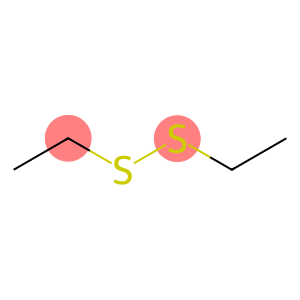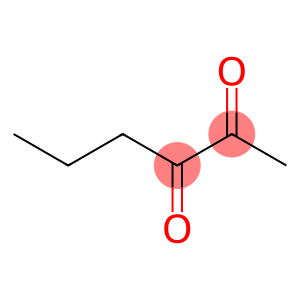Diethyl disulfide(CAS#110-81-6)
| Risk Codes | R22 – Harmful if swallowed R38 – Irritating to the skin R41 – Risk of serious damage to eyes R36/37/38 – Irritating to eyes, respiratory system and skin. R10 – Flammable |
| Safety Description | S26 – In case of contact with eyes, rinse immediately with plenty of water and seek medical advice. S39 – Wear eye / face protection. S37/39 – Wear suitable gloves and eye/face protection S16 – Keep away from sources of ignition. S36 – Wear suitable protective clothing. |
| UN IDs | UN 1993 3/PG 3 |
| WGK Germany | 3 |
| RTECS | JO1925000 |
| TSCA | Yes |
| HS Code | 2930 90 98 |
| Hazard Class | 3 |
| Packing Group | III |
| Toxicity | LD50 orally in Rabbit: 2030 mg/kg |
Introduction
Diethyl disulfide (also known as diethyl nitrogen disulfide) is an organosulfur compound. The following is an introduction to the properties, uses, preparation methods and safety information of diethyldisulfide:
Quality:
- Appearance: Colorless to pale yellow liquid
- Solubility: Soluble in organic solvents such as alcohols, ethers, ethers and ketones, insoluble in water.
Use:
- Diethyldisulfide is commonly used as a crosslinker, vulcanizing agent and difunctional modifier.
- It reacts with polymers containing amino and hydroxyl groups to form a cross-linking network to improve the strength and wear resistance of the polymer.
- It can also be used as a raw material for catalysts, achromatics, antioxidants, antimicrobial agents, etc.
Method:
- Diethyl disulfide is usually prepared by ethanol reaction to produce thioether. Under the reaction conditions, in the presence of ethoxyethyl sodium catalysis, sulfur and ethylene are reduced by lithium aluminate to form ethylthiophenol, and then etherification reaction with ethanol is undergoing etherification reaction to obtain the product of diethyldisulfide.
Safety Information:
- Diethyl disulfide is a flammable liquid, care should be taken to avoid ignition and high temperatures.
- Keep a well-ventilated environment during use and storage.
- Wear appropriate protective equipment such as chemical gloves, goggles, and protective clothing during operation.








